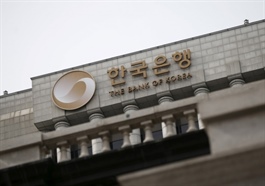Banking sector braces for end of credit room policy
Banking sector braces for end of credit room policy
The State Bank of Vietnam is devising a roadmap to eliminate the credit growth quota mechanism. Speaking to VIR’s Khanh Linh, Dr. Tran Phuoc Huy, chief of office at the School of Banking and Finance under the National Economics University, analysed the potential impacts and the necessary preparations for this transition phase.

Dr. Tran Phuoc Huy, chief of office at the School of Banking and Finance under the National Economics University |
How will the removal of this mechanism for assigning credit growth targets impact the banking system and the Vietnamese economy?
The credit growth quota has been one of the State Bank of Vietnam’s (SBV) most recognisable monetary policy tools for over a decade, designed to directly control the amount of new credit in the economy each year. It has been used to help keep inflation in check, guide the flow of capital into priority sectors, and prevent excessive speculation in high-risk asset classes.
Once this is abolished, commercial banks will have greater flexibility to expand their lending activities and increase outstanding loans. This could stimulate capital flows across a wide range of sectors, potentially accelerating economic growth. For example, manufacturing enterprises, exporters, and infrastructure projects may find it easier to access funding without being constrained by annual quota allocations.
However, the removal of such a long-standing control tool will inevitably introduce new risks. Without the administrative ceiling, credit growth could rise sharply in certain periods, creating upward pressure on inflation. Asset prices, particularly in the real estate and securities markets, could climb to new highs, heightening the risk of asset bubbles.
From a policy perspective, this signals a shift from direct, administrative intervention towards a more market-oriented approach to capital allocation. The SBV and the government will no longer determine credit growth through set limits, but instead regulate indirectly through macroeconomic and prudential tools. In such a system, banks are expected to be more accountable for their own risk management.
What operational tools should the SBV prioritise to replace the controlling role of the credit growth quota in order to stabilise the macroeconomy and curb inflation?
If the quota is removed, the SBV will need to rely on a more sophisticated and proactive set of tools to keep credit growth within safe limits and maintain stability.
One approach is to strengthen the use of prudential ratios, such as the capital adequacy ratio (CAR) and the loan-to-deposit ratio (LDR). For example, banks with higher deposit mobilisation could be allowed to expand lending more aggressively, which would simultaneously promote credit growth and encourage healthy capital mobilisation.
Beyond prudential ratios, the SBV could make more flexible use of conventional policy tools such as interest rates, open market operations, and reserve requirements. Adjusting these in response to market conditions can influence the cost of capital, credit demand, and liquidity in the system. A credible, transparent policy signalling framework will be essential to ensure that markets respond predictably to such changes.
Equally vital is strengthening supervision and risk control. Without the quota, the SBV must closely monitor the pace and quality of credit expansion at each commercial bank.
From the perspective of commercial banks, how will the removal of the credit growth quota require them to adjust business strategies and risk management?
For commercial banks, the policy change presents both opportunities and challenges. Greater lending freedom can boost revenue and profitability, but it also increases the responsibility to manage credit risk effectively.
Profit growth is important, but it cannot come at the expense of risk control. Interest margins may deliver just a few percentage points in earnings, but a single large default can wipe out both profit and capital. With more freedom to lend, banks must be even more disciplined in assessing borrower creditworthiness, monitoring loan performance, and provisioning for potential losses.
Strengthening capital management will be critical. Banks should increase their CAR, implement the Internal Capital Adequacy Assessment Process, and focus on lending to sectors that contribute to sustainable economic growth, such as manufacturing, agriculture, renewable energy, and consumption. Lending purely for short-term speculative gains, especially in overheated real estate markets, could expose banks to significant losses when conditions turn.
How should the roadmap for abolishing the credit growth quota from 2026 be designed to ensure smooth and transparent implementation?
Because the credit growth quota has been in place for over a decade, any change will be a major structural shift. The transition must therefore be carefully phased to avoid destabilising the market.
In Phase 1, starting in 2026, the removal could be piloted among banks with robust financial health, those with strong asset quality, CAR well above regulatory minimums, non-performing loan ratios below 1 per cent, and LDR below 90 per cent.
Phase 2, covering 2027-2028, could see the scope of application expanded to more banks, while gradually relaxing certain safety indicators based on observed performance and market stability.
By Phase 3, from 2029-2030, the sector should be in a position to fully apply Basel III standards. At that point, the quota mechanism could be completely abolished, with market-based tools and prudential regulations fully taking its place.
Which groups of banks are likely to benefit most from this change?
The most immediate beneficiaries will be banks with strong lending capabilities and large customer bases, particularly the big four state-owned commercial banks, which already dominate the market in terms of assets and deposits.
A second group includes banks with high current account savings account ratios, such as Techcombank, MBBank, and Vietcombank. These banks enjoy low funding costs, which gives them greater flexibility to expand lending profitably once the quota is removed.
The third group consists of banks with strong governance frameworks and compliance with Basel III standards, such as TPBank, ACB, VPBank, and HDBank. They already operate under modern risk management systems, making them well-positioned to capture the opportunities arising from the policy change.
Ultimately, while the removal of the credit growth quota opens the door to greater lending activity, it will also reward those banks that can balance expansion with disciplined risk management. The coming years will be a critical test of the sector’s ability to adapt to a more market-driven credit environment while safeguarding financial stability.
- 11:33 18/08/2025


























